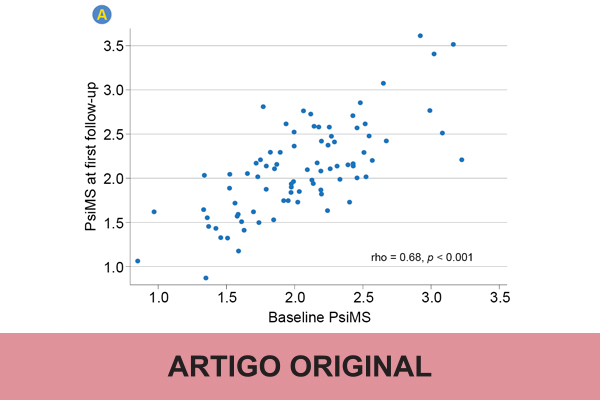SOCIAL MEDIA
Portuguese Medical Association's Scientific Journal

Introduction: Nonalcoholic fatty liver disease is the leading cause of pediatric chronic liver disease. Although nonalcoholic fatty liver disease is closely associated with obesity, its relationship with metabolic syndrome in children is not fully understood. The main aim of this study was to evaluate the association between nonalcoholic fatty liver disease and a combination of cardiometabolic risk factors in adolescents with overweight/obesity, using a pediatric metabolic syndrome score (PsiMS) to predict metabolic syndrome.
Methods: A retrospective cohort study was conducted. Subjects with overweight/obesity aged 10 to 17 followed at two clinical centers in Portugal (2018 - 2021) were enrolled. The independent association of nonalcoholic fatty liver disease with PsiMS, and of other potential predictors, was tested through multiple regression analyses. Receiver operator characteristic curve analysis was performed to estimate the optimal cutoff of PsiMS to discriminate metabolic syndrome.
Results: Eighty-four subjects were included (median age at baseline 11.5 years). The prevalence rate of nonalcoholic fatty liver disease was 51% and the prevalence rate of metabolic syndrome was 7%. The mean PsiMS was 2.05 ± 0.48 at the first evaluation, and 2.11 ± 0.52 at the last evaluation (mean follow-up time was 15 months). The nonalcoholic fatty liver disease group had significantly (p < 0.05) higher weight and body mass index z-scores, higher rate of severe obesity and higher waist circumference percentile. PsiMS was highly accurate in predicting metabolic syndrome (area under the curve = 0.96), with an optimal cutoff of 2.46 (sensitivity 100%, specificity 89%). In the univariate analysis, no statistically significant association was observed between nonalcoholic fatty liver disease and PsiMS. In the multiple regression analysis, female sex had a negative association with PsiMS (first and last evaluation). Independent predictors of a higher PsiMS at first evaluation were: ≥ 2 metabolic syndrome criteria, body mass index z-score, insulin resistance and dyslipidemia. At the last evaluation, independent predictors of a higher PsiMS were: nonalcoholic fatty liver disease, baseline PsiMS and body mass index increase from baseline.
Conclusion: The results suggest a good performance of the PsiMS to assess metabolic syndrome and that nonalcoholic fatty liver disease is associated with PsiMS at follow-up.